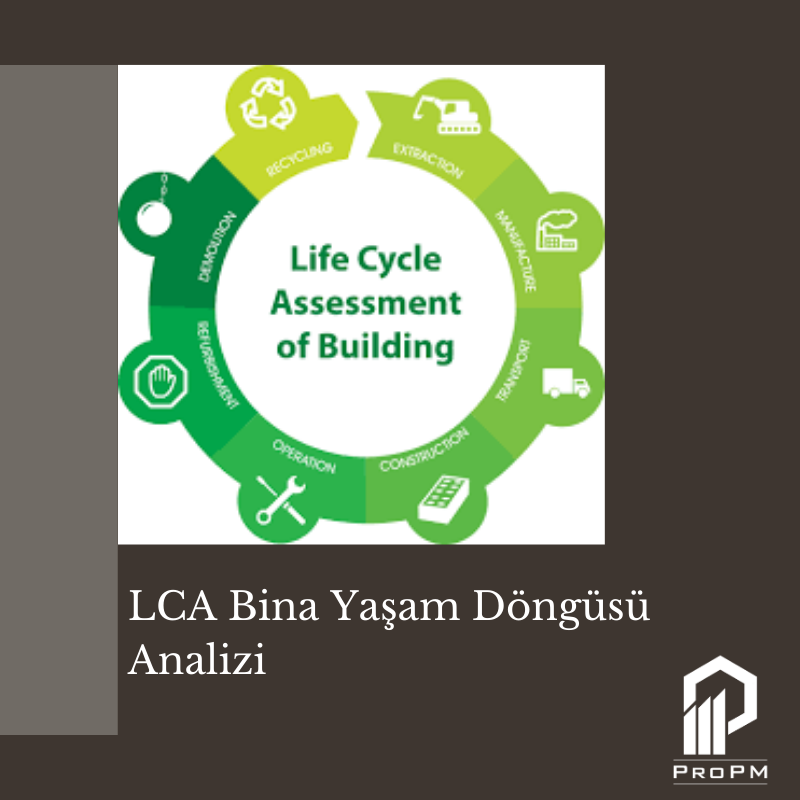How does the Building Lifecycle process work?
Building lifecycle process, created in line with ISO 14040 standards, generally includes the following stages:
Planning phase: This phase begins with determining the building project's purpose, objectives, cost, timeline, and other factors.
Design phase: In this phase, the building project is designed and factors such as scaled drawings, material selection, energy and environmental impacts are taken into account.
Construction phase: This phase includes the construction of the building project. During construction, material and labor costs, timeline and other factors are controlled.
Use phase: This phase includes the use of the building project. At this stage, building operation, maintenance and other operating costs are taken into account.
End-use phase: This phase includes the final use of the building project. At this stage, the building operation, maintenance or reassessment is done.
Demolition: This phase is done at the end of the end-use phase of the Building Project. At this stage, the building is demolished or reassessed.
This process is carried out throughout the entire life cycle of the building project, taking into account specific cost, time and other factors for each phase.
What is the importance of Building Life Cycle analysis in Green Buildings?
Building life cycle analysis is important for green buildings because it allows green buildings to consider factors such as energy efficiency, environmental impacts, and operating costs. Green buildings are designed to have less environmental impact by using less energy, water and materials. In addition, green buildings are designed to reduce operating costs and improve indoor environment quality.
Building lifecycle analysis allows the determination of usable costs, environmental impacts and operating costs for green buildings. This analysis allows estimation of costs, environmental impacts and operating costs throughout the entire life cycle of the building project. This provides important information for building owners and investors because it shows what the projected consequences of the building project's costs and environmental impacts will be.
As a result, Building Life Cycle analysis is important for green buildings because it allows the building project to consider factors such as energy efficiency, environmental impacts and operating costs and provides important information for building owners and investors. Thanks to this analysis, green buildings can be operated less costly, with less environmental impact and better operation.

